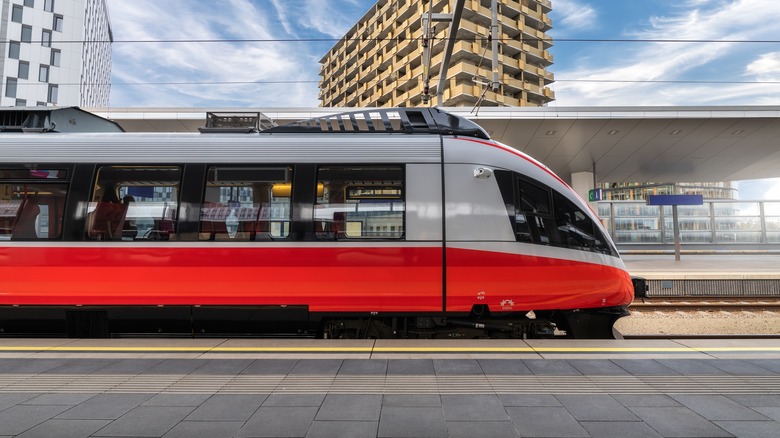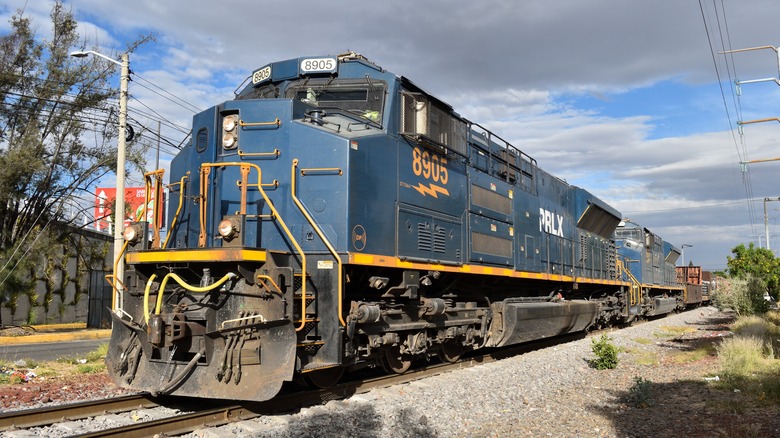How Trains Stay On Track: The Engineering Explained
Though they're not a primary mode for travelers, trains are essential. In the 200 or so years they've existed, they've been used to handle a variety of tasks and have become vital all over the globe. They're quick, safe, and dependable as evidenced by some of the oldest locomotives still in service today. Naturally, trains have transformed since the first models hit tracks back in the 1800s. Countless engineers have come along to improve upon them, resulting in major innovations like the fastest passenger trains around the world. Still, despite their prevalence, the science behind trains isn't something most people understand.
It can be hard to fathom how they manage to stay on track. They're massive, heavy, and move at remarkable speed, so what keeps them from going off the rails? The answer lies predominantly in the shape of their wheels. They're slightly conical in shape, with the inside of the wheel having a larger circumference than the outside. The inside also has a raised edge on the inner side to keep the train attached to the track. When a train turns, centrifugal force pushes the outside wheel to the larger portion of the cone while pushing the inside wheel to the smaller part. This keeps the train from derailing when turning.
While this wheel engineering is impressive, it's not foolproof. Due to a variety of factors, sending a train off-track can and occasionally does happen.
Well-engineered wheels can't prevent train derailment alone
The train wheels we know today have been around for decades upon decades. In that time, they've gone a long way in allowing people and products to cross vast distances safely by rail without flying off the track. (And in the case of some trains from around the world, luxuriously.) However, that's not to say that this wheel and rail system is perfect. Sadly, there are several instances in which the system can fail, resulting in trains derailing in short order. While some of these factors are somewhat avoidable so long as there's a capable conductor at the helm, others are significantly harder to do anything about.
First and foremost is an issue with the track itself, which can go entirely unnoticed until its too late. Everything from continuous stress on re-welded rails to freezing weather-caused rail damage can disrupt the synchronicity between the wheels and the rail, leading the wheel to lose its grip. The wheels themselves can also grow warped and become defective over time, presenting a major hazard. There's also the matter of human error to consider, as a dependable wheel system can only do so much about improper braking or excessive speed before it fails to hold on.
It may sound like train derailment is a common issue, but it doesn't occur nearly as frequently as one might think bearing some of the ways it can happen in mind. Thanks to well-trained conductors and an innovative wheel system, the odds of derailment remain low.

